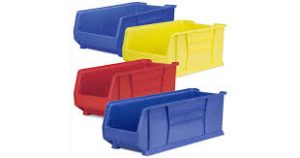Information On Condensation Risk And Nathers Assessment
The NatHERS Assessment process entails modelling a residence in a thermal simulation software programme that has received NatHERS certification, establishing site circumstances, and ultimately thermal simulating the model. To maintain uniformity and allow for fair comparison of various residences with various climatic circumstances and when various computer software is used for NatHERS assessment, certain set rules and protocols must be adhered to. The main foundation of the NatHERS Assessment is the idea of a habitable zone’s thermal comfort in a home environment. The thermal requirements that a zone must meet for its inhabitants to feel secure wearing ordinary apparel are specified by the NatHERS programme. These criteria vary a little depending on the development’s climate zone. The quantity of heat that has to be added to or removed from each zone of the structure to make it acceptable for habitation is determined using a computer software package to model the building. The NatHERS ratings, which are star bands from 0 to 10 stars, are then used to indicate these heating and cooling loads. The following facts must be decided by the NatHERS assessor as a minimum requirement before a NatHERS assessment may be carried out;
- Site details: location, true north orientation, climate zone (postal code or address), overhanging features like nearby buildings, the development site’s lot and DP number, the size of the landscape, and the total roof area.
- Complete geometry, room arrangement, and usage data, as well as the materials used during construction of all external and interior walls, floors, ceilings, and roofs Dimensions and specs for all eaves and shading components
Interstitial voids pose an invisible risk
A bathroom with insufficient ventilation and cold, uninsulated ceilings and walls, as well as a corner of a closet with insufficient airflow, can both rapidly develop a visible mould problem on the interior surfaces (resulting in the mouldy leather shoes most of us experience in at least one house during our lives). Most dwellings may prevent these interior condensation risk NSW with good ventilation, expelling of moist air, and insulated walls and ceilings. The coldest and wettest section of the majority of Australian homes will still be the aluminium-framed single glazing, but at least you can see it and clean it up. Condensation builds up in areas that are difficult to perceive, such as the space under the floor, the walls, and the roof space, is a more pernicious issue (between the internal and external envelopes). If a room consistently fogs up or develops damp walls, at least the resident may observe it happening and attempt to stop it or lessen it. However, if condensation forms in those unnoticed areas, it can be too late by the time the resident notices a problem.
How do contemporary methods reduce the risk of condensation?
If modern procedures are used incorrectly or without taking into account the house’s overall system, they could have disastrous results. However, the claim is mostly false. It is untrue that the only effective preventative measures against condensation are adopting Passive House standards or going back to outdated or subpar construction techniques and standards that guarantee regular air leaks prevent the build up of vapour. There are also temporary, affordable strategies for controlling moisture transport through homes and lowering the risk of condensation in NSW.
